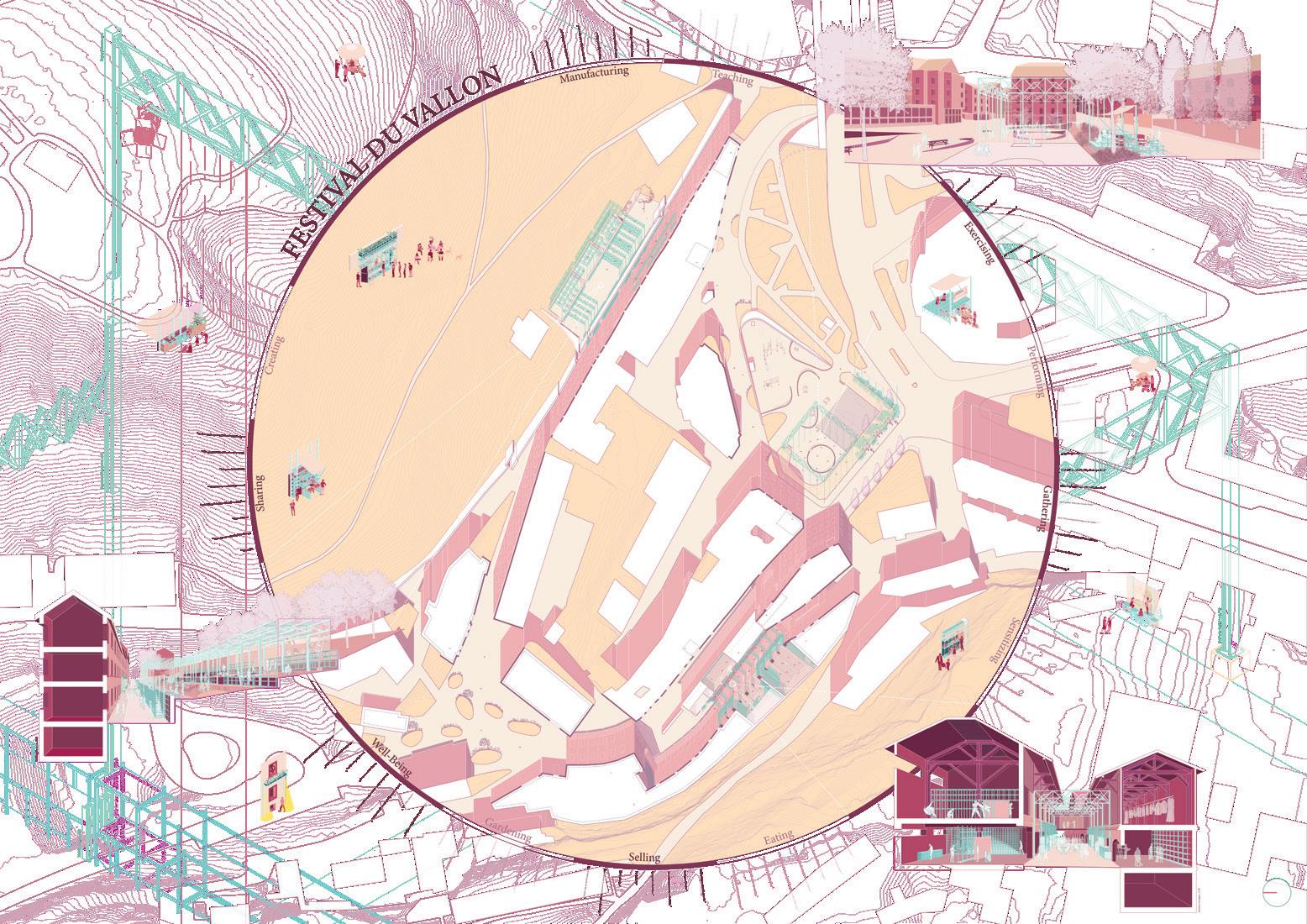
2 minute read
A visual Manifest
MxD lab Master Project
Festival du Vallon - Highlighting the social and cultural dynamics of the neighbourhood
Advertisement
Prof. Jeffrey Huang Assitant: Mikhael Johanes
Collaboration:Teo Golay
The Vallon district in Lausanne is very enigmatic. Despite its location in the heart of the city, the social reintegration infrastructures and its topographical position in a basin make it a marginalized neighbourhood and often seen as inhospitable. However, the social and cultural dynamics that have developed there make it a particularly inspiring example of a participatory, selfmanaged and vibrant community.
Since 2016 the Vallon has opened up to the rest of the city by organising festivals in the neighbourhood, promoting culture, art, their way of life and their values. Unfortunately, this energy and participatory life lacks visibility in the eyes of the general public. In this project, we propose a reinvention and enhancement of the collective spaces we have identified. By dilating the street, a collision is made between the community places and the public place, creating new spaces with multiple uses.
They are delimited and visually marked by our architectural interventions based on the somewhat chaotic and festive identity of the neighbourhood. Our modular structure allow the inhabitant to create to create ephemeral and changing configurations in order to respond to the multiple atmospheres that the festival requires.
Prior to this project we did a theoretical research about our visual system and the impact it has on our architectural perception. This research taught us a lot about certain physiological reactions that can be triggered by architectural elements and allowed us to better understand the emotional impact that certain architecture has on us.
During this research we were also greatly sensitized to the notion of representation. And its impact on our mental representation of space.
That’s why we created an object for experimental representation. A black box narrowing our field of view and projecting the viewer in a space composed of layers of element that build our physical world. Depending on the layer’s configuration different perception of a unique space appear to the viewer.











